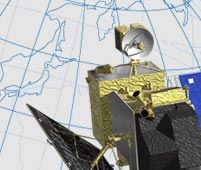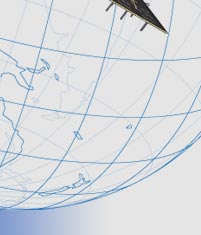 |
H-IIA Launch Vehicle No. 8 (H-IIA F8) with Daichi |
 |
The goal of Earth observation satellites is for the data to be used widely, and Daichi is no exception. We are considering offering disaster data for free, as a matter of principle. The rates for individual research or commercial use will probably be much lower than those of other satellites. Management of Daichi data, including commercial distribution in Asia, will be handled by the Remote Sensing Technology Center of Japan (RESTEC).
We also hope that Daichi’s data will find applications beyond Asia, and we are establishing a system for organizations to handle both commercial and not-for-profit distribution in the Americas, Europe and Oceania. We have asked them to respect the principle of the development of Daichi, and to keep their rates as low as possible.
|

The launch of Daichi has been delayed for almost a year. The major factor in this delay was the failure of the Advanced Earth Observing Satellite II (ADEOS-II), also known as Midori-II, which was released in December 2002. Ten months after its launch, the operation was abandoned due to major technical problems. Soon, concerns arose about the Daichi project, and as a matter of course, we reviewed literally every aspect of the project starting at its very roots. From the design to tests and evaluation, it took us almost ten months to go through everything. The failure of ADEOS-II was caused by an unexpected increase in the heating of the satellite, reportedly caused while it was in orbit, as well as the phenomena of electrification and electrical discharge of plasma and ions. Unfortunately, Japan had little experience in the areas of electrification and electrical discharge, and therefore we had little choice but to rely on foreign references, conduct our own tests and analyses, and seek assistance from university researchers. It was very challenging to understand and overcome these technical problems, and it took a lot of time.
We also had another problem: an electronic device used for Daichi was recalled. The problem first occurred with JAXA’s infrared astronomy satellite, ASTRO-F, and we learned that the same device had been used in Daichi. Although no trouble had been reported, all the units with the recalled device were taken apart and the device was replaced.
Recalls are unpredictable. There are cases where we identify a problem in the course of developing a satellite. But it is more common that we find out about it through alerts sent by users around the world, which come once or twice a month through networks of space agencies. We always paid close attention to the alerts, hoping that no devices used in Daichi would be listed. So, naturally, we were shocked when we first found out that one had been, but we were determined to minimize the risk as much as possible, so we decided to exchange and repair all the units. Although this resulted in a delay in our schedule, we decided to take care of all our worries before launch.
We all now feel that we have done everything in our power to make sure that Daichi is a success.
|
|
 |







